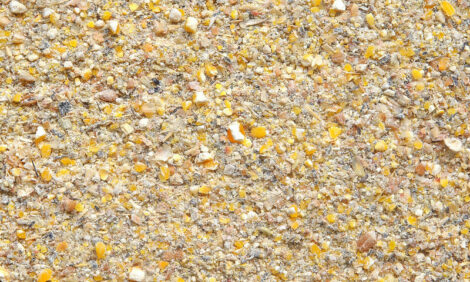



Weak US dollar benefits some farm commodities, but not all
Fluctuating currency values can boost export opportunities for many agricultural commodities, but they can create headwinds for others - new CoBank report.The value of the US dollar weakened substantially since March 2020 and is expected to experience modest deflation in 2021. A weaker dollar generally makes US agricultural products more competitive on the global export market. However, not all commodities are affected equally given the diversity in global export competition and foreign exchange rates.
Fundamental factors like tariffs and weather conditions in key agricultural producing regions often dominate market dynamics despite currency headwinds or tailwinds and should not be discounted, according to a new report from CoBank’s Knowledge Exchange.
“US agricultural exports are largely expected to continue a faster pace in 2021 with help from weakness in the US dollar,” said Tanner Ehmke, manager of CoBank’s Knowledge Exchange. “But our research indicates that some agricultural commodities like grains, oilseeds, and cotton will face a currency headwind.”
CoBank’s estimates on commodity-specific trade weighted balances reveals a nuanced view of currency implications for US agricultural exports in 2021.
Animal protein
After a challenging currency environment in 2020, US animal protein exports are expected to benefit from a modest tailwind fuelled by a weaker US dollar in 2021. The outlook for a stronger Australian dollar and euro should make US beef and pork exports the largest beneficiaries in the coming year.
Beyond currency, other drivers signalling a good year for US protein exports in 2021 include less disruption to US meat processing capacity, the rebound in global foodservice demand, and the upward trend in China’s meat and poultry imports.


Grain & oilseeds
The US trade weighted grain and oilseed index stands out relative to other agriculture commodities. The index strengthened by 14% in 2020 and is expected to gain another 4%-5% in 2021. The further strengthening of the grain and oilseed index is driven by the US dollar’s strength relative to the currencies of major exporters like Brazil, Argentina and Ukraine.
“A casual observer could argue that corn and soybean exports will face headwinds in 2021 since the index strength implies that US exports become less price competitive,” said Kenneth Scott Zuckerberg, lead grain and farm supply economist with CoBank. “But this was not the case in 2020 nor is it expected to be in 2021 due to Chinese demand.”
China has been aggressively buying US grain for feed as it rebuilds its hog herd, leveraging its strong currency relative to the US dollar despite the dollar’s strength in relation to other currencies.
Read the report, Dollar divergence: US dollar index does not reflect true dollar impact on US ag exports.









